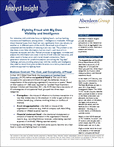 | Although direct financial losses from fraud can vary significantly from one industry to another or in different parts of the world, the annual cost of fraud is substantial and the benefits of reducing it are very real. The problem is not that there is too little information, but too much and most of it in disparate stovepipes and silos. Manual processes to aggregate, correlate and analyze this information are costly in terms of both time and resources, and often result in human error and crucial missed connections. Next generation solutions for predictive analytics are solving the “big data” challenge, and are providing enterprises with the visibility and intelligence they need to move from post incident forensics to a more proactive and predictive approach to fighting fraud. Request Free! |
